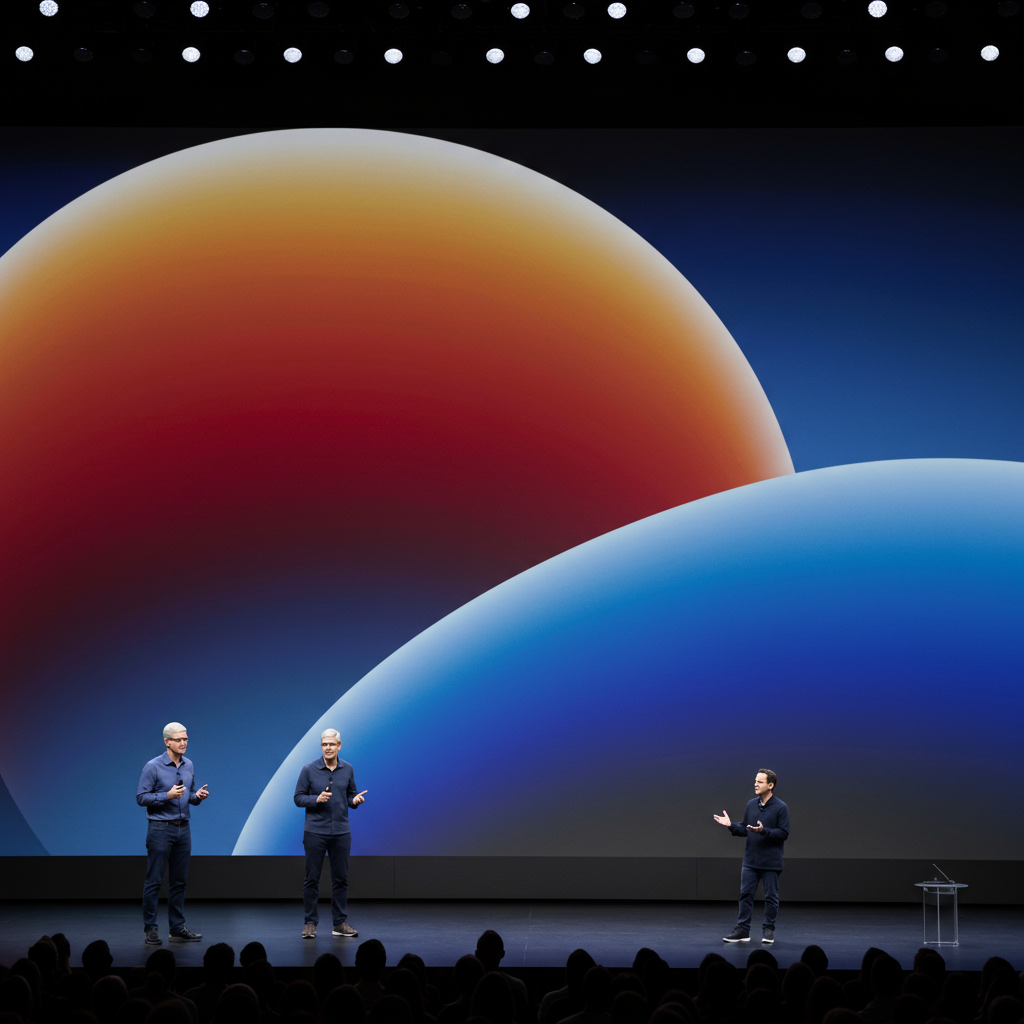OpenAI’s Sora app is revolutionizing AI video creation, offering users groundbreaking tools to bring their digital visions to life. The latest update introduces powerful “character cameos,” enabling you to animate anything from beloved pets and unique doodles to original fictional personas and even inanimate objects within your AI-generated videos. This expansion isn’t just about fun; it signifies a massive leap in personalized storytelling and creative control for AI video enthusiasts. Alongside these innovative cameos, Sora now features intuitive video stitching and dynamic community leaderboards, cementing its position at the forefront of generative AI. However, this exciting rollout also navigates a complex legal challenge regarding the “cameo” terminology, adding another layer to its compelling narrative.
Unlock Limitless Creativity with Sora’s Character Cameos
Sora’s new character cameo feature dramatically broadens the scope of AI-generated content. Previously, the app allowed users to create AI avatars of themselves. Now, your creative canvas is virtually limitless. Imagine your dog embarking on an animated adventure, a quirky doodle springing to life, or a meticulously crafted original persona starring in its own AI film. This update empowers creators to populate their videos with custom digital characters, enhancing narrative depth and artistic expression.
The process of crafting these unique digital personalities is designed for simplicity. You begin by navigating to your profile page within the Sora app. A dedicated “Create cameo” button guides you to the next step: uploading a short video clip. OpenAI states that just a few seconds of footage are sufficient to capture your desired character – whether it’s your cat, a plush toy, or an intriguing illustration. Even previously generated Sora videos can serve as the foundational reference material for your new character.
Crafting Your Character’s Digital Soul
Once your video is uploaded, you’re prompted to give your character a distinct display name. This is where your imagination truly takes flight. You then provide a descriptive text, guiding the AI model on how to animate your character. For instance, OpenAI offered a compelling example for a “wicked green witch”: “She glides with a mysterious, whimsical grace, speaks in rhymes when casting spells, and her pointed hat always tilts as if listening to secrets on the wind.” This level of detail allows creators to imbue their characters with specific mannerisms, dialogue styles, and even nuanced personality traits, transforming simple footage into vibrant digital beings. Users can also specify “restrictions” to dictate behaviors a character should avoid, adding another layer of control.
An important distinction to note is that this feature does not allow for the generation of human character cameos from uploaded footage, a critical ethical safeguard against deepfake misuse involving real people. However, ambiguities persist regarding the system’s acceptance of highly photorealistic fictional people generated by other AI tools, and how Sora would differentiate these from real human likenesses.
Elevate Your Storytelling with Video Stitching and Community Features
Beyond the exciting character cameos, Sora introduces two additional powerful features: video stitching and community leaderboards. These additions significantly enhance the user experience and expand creative possibilities within the platform.
Seamless Narratives with Video Stitching
The new “stitching” capability allows you to combine multiple individual video clips into longer, more complex narratives. This feature is a game-changer for storytelling, enabling users to create multi-scene productions or continuous video sequences directly within the Sora app. Imagine weaving together different character cameos, scenes, and generated footage to craft a complete story, rather than being limited to single, short clips. This opens doors for more ambitious, cinematic projects from casual creators and aspiring filmmakers alike.
Discover and Engage with Leaderboards
To foster creativity and community interaction, Sora now includes dynamic leaderboards. These leaderboards showcase the most “cameoed” and “remixed” videos, spotlighting popular content and trending characters within the Sora community. This feature not only provides a platform for user-generated content to gain visibility but also encourages engagement, inspiring users to experiment with new characters and remix existing popular videos. It creates a vibrant ecosystem where creativity is recognized and shared.
Granular Control: Managing Permissions and Privacy
OpenAI understands the importance of control over your digital creations. Each character you generate in Sora comes with its own set of detailed permissions, ensuring you dictate who can access and utilize your unique AI personas. Under the “Who can use this” section, you have several options:
Only me: Keep your character completely private for personal use.
People I approve: Share with a select group of trusted individuals.
Mutuals: Grant access to users with whom you have a reciprocal connection.
Everyone: Make your character publicly available to the entire Sora community.
Everyone (excluding specific sets of users): A nuanced option for broad sharing with exceptions.
This granular control is crucial for managing both creative collaboration and personal privacy, especially as AI-generated content becomes more prevalent. To integrate a character into any video, you simply tag the specific character during the video generation process within the Sora app.
The “Cameo” Controversy: A Legal Battle Unfolds
The rollout of Sora’s enhanced character cameos coincides with a significant legal challenge. Cameo, the well-known app that facilitates personalized celebrity video messages, has filed a trademark infringement lawsuit against OpenAI. The celebrity video platform asserts that OpenAI’s use of the term “cameo” for its new feature is likely to cause consumer confusion and dilute its established brand identity.
OpenAI, however, publicly disagrees with this claim, stating its belief “that anyone can claim exclusive ownership over the word ‘cameo.'” This legal dispute highlights the growing complexities of intellectual property in the rapidly evolving AI landscape, where common words take on new meanings in innovative technological contexts. The outcome could set precedents for how descriptive terms are protected—or not—in the AI era.
Ethical Frontiers and AI’s “Disturbing” Creativity
As AI video generation advances, ethical considerations become increasingly prominent. While Sora’s character cameo feature does not permit human character generation from uploads, questions remain about handling highly photorealistic AI-generated fictional people. How will the platform differentiate between AI-created “personas” and potential misuse that could mimic real individuals?
Furthermore, the creative output, while powerful, can sometimes be unsettling. As reported by ZDNet, testing the feature with inanimate objects yielded “borderline disturbing” results. For instance, an ancient Aztec serpent head statue was transformed into “Lava Lizard Sage,” a character described as sharing “cryptic riddles and gently wiggles along the earth.” Videos generated showed the rocky serpent slithering with empty eye sockets, speaking profound words in an unexpected, deep voice. This illustrates the feature’s capacity to imbue non-human entities with uncanny lifelike qualities and voices, pushing the boundaries of what is possible—and perhaps comfortable—in AI animation. All videos generated through Sora, including custom character content, prominently display the app’s bouncing watermark, an important step for transparency.
Enhanced Accessibility for Global Creators
In a strategic move to broaden its user base and encourage experimentation with these new features, OpenAI has temporarily removed the invitation code requirement for the Sora app. For a limited time, users in the United States, Canada, Japan, and South Korea can sign up and begin using Sora without needing an invite. This initiative aims to accelerate the adoption of these cutting-edge AI video tools and foster a larger, more diverse community of creators. Sora continues to compete in the crowded AI video market alongside other prominent tools like Runway, Pika, and Synthesia, aiming to distinguish itself through user-centric features and community engagement.
Frequently Asked Questions
How do I create a custom character cameo in OpenAI Sora?
Creating a character cameo in Sora is straightforward. First, open the Sora app and navigate to your profile page. Tap the “Create cameo” button. You’ll then upload a short video (just a few seconds) of the pet, doodle, object, or original persona you wish to animate. After uploading, assign a display name and provide a detailed text description of how you want the AI model to animate your character, including personality traits or specific movements. You can also set privacy permissions for your creation.
Which countries currently have invite-free access to Sora’s new features?
For a limited time, OpenAI has made the Sora app accessible without an invitation code in specific regions. Users located in the United States, Canada, Japan, and South Korea can currently sign up for Sora and begin utilizing the new character cameo, video stitching, and leaderboard features immediately. This initiative aims to expand the user base and encourage wider adoption of the platform.
What are the key ethical considerations when using Sora’s character cameo feature?
While Sora’s character cameo feature does not allow users to generate human character cameos from uploaded footage, ethical considerations remain. Ambiguities exist regarding the acceptance of highly photorealistic fictional people generated by other* AI tools and how Sora would differentiate these from real human likenesses. Additionally, the feature’s ability to imbue inanimate objects with lifelike qualities and voices can sometimes lead to “borderline disturbing” outputs, prompting discussions on the emotional and psychological impact of AI-generated content. Transparency, indicated by Sora’s watermark on all generated videos, is a crucial step in addressing these concerns.
The Future of AI Video is Here
OpenAI’s latest Sora update marks a significant milestone in generative AI video. By offering intuitive character cameo creation, seamless video stitching, and engaging community features, Sora is empowering a new generation of digital storytellers. Despite ongoing legal challenges, the platform’s commitment to expanding creative possibilities while addressing accessibility points to an exciting future. As more users gain access and explore these powerful tools, we can anticipate a surge in innovative, personalized AI-generated content, pushing the boundaries of what’s possible in digital media.




